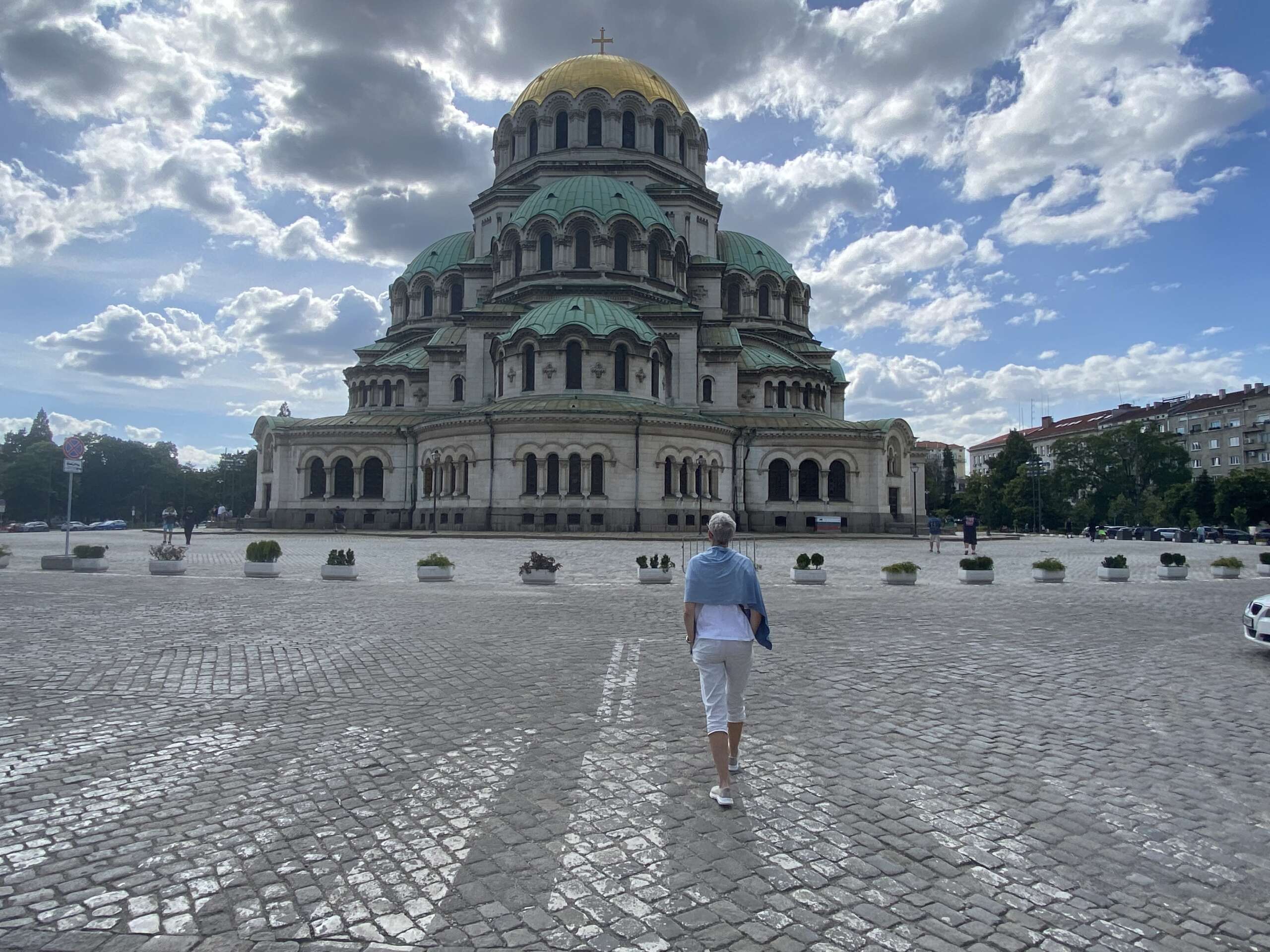
Bulgaria. Its name just rolls off your tongue! The link in our travels between the countries of Greece and Turkey. A country I never expected to visit, but with its wide open spaces, its reminders of Soviet Russia, its incredible buildings, I am glad I have.

There is some initial confusion when our Uber driver tries to leave us at the incorrect bus station, but the mistake is quickly rectified and we settle into our five-hour journey to Sofia, the capital of Bulgaria. As the hours while away, the austere hills of Greece give way to the softer, greener landscape of Bulgaria.

At the Bulgarian border, we are all made to disembark, and while we are probed about our missing European entry stamp, it’s not really a problem. There is a problem, however, when on re-boarding our bus, we find we are missing a passenger. The driver is a grumpy gentleman and doesn’t wait, despite the protestations of fellow travellers. A deed he rues forty minutes later when head office phones castigating him about missing passenger. We know this because we have the Google translate app open on our phone. Another forty minutes and we pull over where, after a brief wait, the missing passenger arrives in a taxi, yells at the driver, then calmly sits back in her seat. A memorable journey.

Bulgaria is an old country. It is actually the oldest country that hasn’t changed its name since it was first established in 681 AD. And Plovdiv, Bulgarias second biggest city, was founded in 6000 BCE, making it Europes oldest city.

Being so old, the country has had a varied history (strongly influenced by the Greeks and Romans; centuries of Ottoman rule) but what interests me the most is its soviet association. While never officially part of the USSR, it was a communist country and a close ally of Russia. Why this interests me is because, for the three days we are here, there are constant reminders of our travels throughout Russia and Poland. The enormous ornate government buildings. The grey concrete apartment blocks. The rusting trams and damaged concrete footpaths. The place just feels like it is still trying to escape the shackles of the cold war.

It was a toss up whether to stay in the Bulgarian capital Sofia, or the smaller, more casual Plovdiv. What eventually swayed us was train departure times. We could board our Istanbul bound train at 6.40pm from Sofia, or wait until 10pm if we wanted to board in Plovdiv. A compromised was reached when we decided to stay in Sofia but spend a day visiting Plovdiv.

It’s a public holiday weekend and while the streets are quieter of traffic and some shops are closed, tourists are still visiting and on Sunday, it appears as if everyone is getting married. I lost count of the number of brides we saw.

With the weather an invigorating 12 degrees on waking and rising to 24 throughout the day, it’s easy to spend full days strolling the streets. Gorgeous buildings housing art galleries and museums, ancient roman ruins, copious grand churches, a stunning synagogue and lush gardens, keep us happily occupied.


It was recommended we visit Plovdiv, a two-hour bus journey from Sofia. Its old town was the oldest in Europe and the city, with a population of just under 350,000, would be quieter than Sofia. Although we hadn’t found Sofia busy. In fact, we had found the place so less populated than expected that we Googled it. Turns out Bulgaria has a bit of a population crisis. Since shedding its communist manacles in 1989, the country has lost around 2 million people due to declining birthrates, increasing death rates and migration. Today, the population sits around 6.4 million.

Despite the hype, Plovdiv’s old town turns out to be rather disheartening. Maybe it’s because we were only there for half a day, but we leave disappointed. While the town’s cobblestone streets certainly look ancient and the 4th century roman ruins, impressive, the majority of the buildings date to just the 1800s. They were built during the so-called Bulgarian National Revival. They are not really ancient and, with their immaculate paint jobs, look like they are there to please the tourists more than anything.



It’s 2pm on a Monday afternoon. We have checked out of our hotel room and are currently bidding time in the hotel’s foyer. At 5.00pm we will make our way to Sofia Central station and board our train to Turkey. Midnight will see us crossing the Bulgarian-Turkey borders. It looks like it is going to be a long night.
